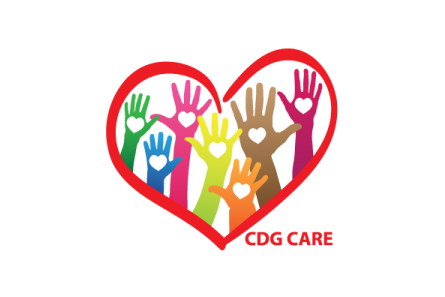CDG CARE
Cycle 3
CDG stands for Congenital Disorders of Glycosylation. CDGs are a large group of rare inherited diseases affecting glycosylation.
Last updated 04/30/2025
Clinical
Disease Class
Allergic disease
Bone diseases
Cardiac diseases
Cardiac malformations
Channelopathies
Circulatory system diseases
Developmental anomalies during embryogenesis
Disorder without a determined diagnosis after full investigation
Endocrine diseases
Gastroenterological diseases
Genetic diseases
Gynecological and obstetric diseases
Hematological diseases
Hepatic diseases
Immunological diseases
Infertility
Inherited metabolic disorder
Neurological diseases
Odontological diseases
Ophthalmic diseases
Renal diseases
Respiratory diseases
Skin diseases
Urogenital diseases
Body Systems
Cardiovascular / Circulatory
Digestive
Endocrine
Hematopoietic / Lymphatic / Immune
Integumentary / Exocrine
Metabolic
Muscular / Skeletal
Nervous / Sensory
Reproductive
Respiratory
Organs
Blood
Bone marrow
Bones
Brain
Connective tissue / joints
Ears
Esophagus
Eyes
Heart
Intestines
Kidneys
Liver
Lungs
Muscles
Nerves
Ovaries
Pancreas
Stomach
Testes
Thyroid
Known Genetic Link
Yes, one or more genes directly cause the condition
causative_genes
A4GALT
ALDOB
ALG1
ALG10
ALG11
ALG12
ALG13
ALG14
ALG2
ALG3
ALG5
ALG6
ALG8
ALG9
ARV1
ATP6AP1
ATP6AP2
ATP6V0A2
ATP6V1A
ATP6V1E1
B3GALNT2
B3GALT6
B3GAT3
B3GLCT
B4GALNT1
B4GALT1
B4GALT7
B4GAT1 (B3GNT1)
BPNT2
CAD
CAMLG
CANT1
CHST11
CHST14
CHST3
CHST6
CHSY1
COG1
COG2
COG3
COG4
COG5
COG6
COG7
COG8
COLGALT1
CRPPA (ISPD)
CSGALNACT1
DDOST
DHDDS
DOLK
DPAGT1
DPM1
DPM2
DPM3
DSE
EDEM3
EOGT
EXT1
EXT2
EXTL3
FAM20B
FCSK
FKRP
FKTN
FUT8
G6PC3
GALE
GALK1
GALM
GALNT14
GALNT2
GALNT3
GALT
GANAB
GET3
GET4
GFPT1
GFUS
GMPPA
GMPPB
GNE
GNPNAT1
GNPTAB
GNPTG
GOLGA2
GOSR2
GPAA1
HS2ST1
HS6ST1
HS6ST2
JAGN1
LARGE1
LFNG
LYSET
MAGT1
MAN1B1
MAN2A2
MAN2B2
MAN2B2
MAN2C1
MGAT2
MOGS
MPDU1
MPI
NANS
NDST1
NGLY1
NPL
NUS1
OGT
OSTC
PAPSS2
PGAP1
PGAP2
PGAP3
PGM1
PGM3
PIGA
PIGB
PIGC
PIGF
PIGG
PIGH
PIGK
PIGL
PIGM
PIGN
PIGO
PIGP
PIGQ
PIGS
PIGT
PIGU
PIGV
PIGW
PIGY
PMM2
POFUT1
POGLUT1
POMGNT1 (LGMD2K)
POMGNT2 (GTDC2)
POMK (SGK196)
POMT1
POMT2
PRKCSH
RFT1
RXYLT1 (TMEM5)
SEC23B
SEC63
SLC10A7
SLC26A2
SLC35A1
SLC35A2
SLC35A3
SLC35B2
SLC35C1
SLC35D1
SLC37A4
SLC37A4
SLC39A8
SLC9A7
SRD5A3
SSR3
SSR4
ST3GAL3
ST3GAL5
STT3A
STT3B
STX5
TGDS
TMEM165
TMEM260
TMTC3
TRAPPC11
TRAPPC9
TREX1
TRIP11
TUSC3
UGDH
UGP2
VMA12
VMA21
VMA22
VPS13B
VPS51
VPS53
XYLT1
XYLT2
contributory_genes
None specified / unknown
Type of Inheritance
Autosomal dominant
Autosomal recessive
De novo
X-linked dominant
X-linked recessive
Newborn Screening
No
Disease Mechanism(s)
Glycosylation disorder
Age of Onset
Adolescence (12-17)
Adulthood (age 18-64)
Early childhood (age 1+-5)
Infancy (age 0-1)
Middle childhood (6-11)
Average Age at Diagnosis
Early childhood (age 1+-5)
Middle childhood (6-11)
Life Expectancy
Adolescence (12-17)
Adulthood (age 18-64)
Early childhood (age 1+-5)
Infancy (age 0-1)
Middle childhood (6-11)
Affected Sex(es)
Female
Male
National Prevalence
1001-10000
Global Prevalence
1001-10000
National Incidence
Less than 10
Global Incidence
Less than 10
Populations and/or ancestry with higher prevalence
CDG patients exist worldwide. The most common genetic cause (PMM2-CDG) has a high carrier frequency among individuals of European ancestry, whereas GPI-CDG types are more frequently reported in individuals of Asian ancestry. Additionally, regions with high rates of consanguineous marriage, such as parts of the Middle East and North Africa—including Egyptian communities around Cairo—have been observed to have an increased incidence of CDG types inherited in an autosomal recessive manner. Consanguinity increases the likelihood of inheriting rare genetic disorders, including various congenital disorders of glycosylation (CDG), due to the higher probability of both parents carrying the same pathogenic variants.
Symptoms / Phenotypes
abnormal brain features
abnormal breast morphology
abnormal digit morphology
abnormal ear morphology
abnormal eye morphology
abnormal facial shape
abnormal heart morphology
abnormal skeletal morphology
cardiac abnormalities
cerebellar atrophy
cerebral atrophy
clubfoot/talipes equinovarus
craniofacial abnormalities
decreased liver function
developmental delay
diarrhea
digital ischemia
enlarged liver / hepatomegaly
feeding difficulties
gastroesophageal reflux
gastrointestinal disorders
hyperlaxity / joint laxity
hypotonia
intellectual disability
liver disease
microcephaly
movement disorders / ataxia / tremor
osteopenia
seizures / epilepsy
splenomegaly
vision problems
vomiting / nausea
Biomarkers
Diagnostic
· transferrin glycosylation, plasma/serum glycomics & glycoproteomics, antibodies
Monitoring
· transferrin glycosylation, plasma/serum glycomics & glycoproteomics, antibodies
Prognostic
· transferrin glycosylation, plasma/serum glycomics & glycoproteomics, antibodies
Therapeutic
· transferrin glycosylation, plasma/serum glycomics & glycoproteomics, antibodies
Existing Therapies
Complementary and Alternative treatments
· Some CDG have been treated with monosaccharide supplements, most notably are mannose supplementation for MPI-CDG, and also galactose supplementation of PGM1-CDG and SLC35A2-CDG, and fucose supplementation for SLC35C1-CDG. Manganese supplementation has been used for SLC39A8-CDG.
FDA-Approved for Symptom Relief
· Medications for seizures, constipation, and endocrinologic manifestations
Off-Label Drug Use
Other
· Organ transplant may be helpful in some CDG and for some organ dysfunction, such as liver failure, heart failure/cardiomyopathy, and immunodeficiency
Organizational & Research
Cell Lines
None
Disease Model
C. elegans
Drosophila/fly
Organoids
Yeast
Disease Model, Involvement
Consulted
Designed
Funded
Own
Disease Model, share
Some of our disease models are freely available
Clinical Trial Role
Funding
Meeting with regulators
Recruitment and outreach, patients
Biobank, Institution
None
Center of Excellence, Institution
Baylor College of Medicine
Boston Children's Hospital
Children's Hospital of Colorado
Children's Hospital of Pittsburgh
Childrens Hospital of Minnesota
Children’s Hospital of Philadelphia (CHOP)
Mayo Clinic
Mt. Sinai
Seattle Children's Hospital
Tulane University
University of Alabama
University of North Carolina (UNC)
Center of Excellence, Involvement
Consulted
Endorsed/Certified/Accredited
Registry
Yes, we have a registry that we created
Data Collected, Registry
Clinical data
Medication usage
Patient contact info
Patient-reported data
Data Entered by, Registry
Patients
Platform, Registry
Invitae Patient Insights Network
Natural History Study
Yes, we have collaborated on a natural history study
Data Collected, Natural History Study
Clinical endpoints (outcomes)
Electronic health records/electronic medical records
Genetic data
Imaging data
Medication usage
Patient-reported outcomes
Prospective data
Retrospective data
Platform, Natural History Study
REDCap
FDA Patient Listening Session
Yes
FDA Patient-Focused Drug Development (PFDD) Program
No
ICD Codes
We use an ICD-10 code capturing the family of diseases to which our disease belongs
Diagnostic Guidelines
Yes, we have published formal guidelines in a peer-reviewed journal
Science Advisory Board Policies
Yes, willing to share SAB policies
Research Network Policies
Does not have a CRN
Research Roadmap
We don't have a Research Roadmap
International Chapters
None
International Partners
Africa
Europe
North America
South America
